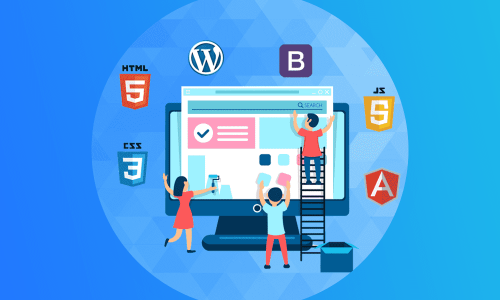
Choosing the Right Technology Stack: A Guide to Empowering Web and Mobile Projects

Introduction:
Selecting the appropriate technology stack is a critical decision that can significantly impact the success of web and mobile projects. The right technology stack ensures scalability, performance, security, and an exceptional user experience. In this article, we will provide a comprehensive guide to help clients choose the right technology stack for their projects. By considering key factors and understanding the strengths and limitations of different technologies, clients can make informed decisions that align with their project goals and requirements.
Define Project Requirements:
Before diving into technology options, it’s essential to clearly define the project requirements. Consider the desired functionalities, anticipated user base, expected traffic, data handling, and integration needs. Understanding these requirements will help narrow down the suitable technology stack options.
Scalability:
Scalability is crucial for accommodating future growth and ensuring optimal performance. Evaluate whether the technology stack can handle increasing user loads and accommodate additional features. Consider frameworks, databases, and cloud services that offer scalability features, such as horizontal scaling or auto-scaling capabilities.
Performance:
Performance is a key factor in providing a seamless user experience. Evaluate the performance capabilities of the technology stack, including the response time, loading speed, and efficiency. Consider frameworks and technologies known for their performance optimizations, caching mechanisms, and efficient data handling techniques.
Security:
Security is paramount for protecting sensitive user data and preventing potential vulnerabilities. Assess the security features offered by the technology stack, such as built-in encryption, secure authentication methods, and protection against common threats like cross-site scripting (XSS) and SQL injection. Additionally, consider the availability of security updates and the community support for addressing security concerns.
User Experience:
User experience plays a vital role in engaging users and driving success. Evaluate whether the technology stack supports the desired user interface design and interactive elements. Consider frameworks and libraries that offer robust front-end development capabilities, responsive design features, and support for creating intuitive and visually appealing user interfaces.
Community Support and Documentation:
The availability of community support and documentation is crucial for developers. A vibrant community ensures timely updates, bug fixes, and access to resources for troubleshooting and learning. Evaluate the community size, active forums, and developer documentation of the technology stack under consideration.
Developer Skill Set:
Consider the existing skill set of your development team or the availability of developers with expertise in the chosen technology stack. Choosing a stack that aligns with your team’s skills will ensure efficient development and maintenance. If necessary, evaluate the availability of external resources or the potential to upskill the team.
Cost and Time Considerations:
Evaluate the cost implications and development time associated with the technology stack. Consider licensing fees, infrastructure requirements, and development resources required. Additionally, assess the availability of libraries, modules, or plugins that can expedite development and reduce time-to-market.
Conclusion:
Choosing the right technology stack is a critical decision that sets the foundation for successful web and mobile projects. By considering factors like scalability, performance, security, user experience, community support, and developer skill set, clients can make informed choices that align with their project requirements and goals. It’s essential to evaluate multiple options, conduct thorough research, and seek expert advice when needed. By selecting the appropriate technology stack, clients can empower their projects with the tools necessary for success in today’s dynamic digital landscape.





